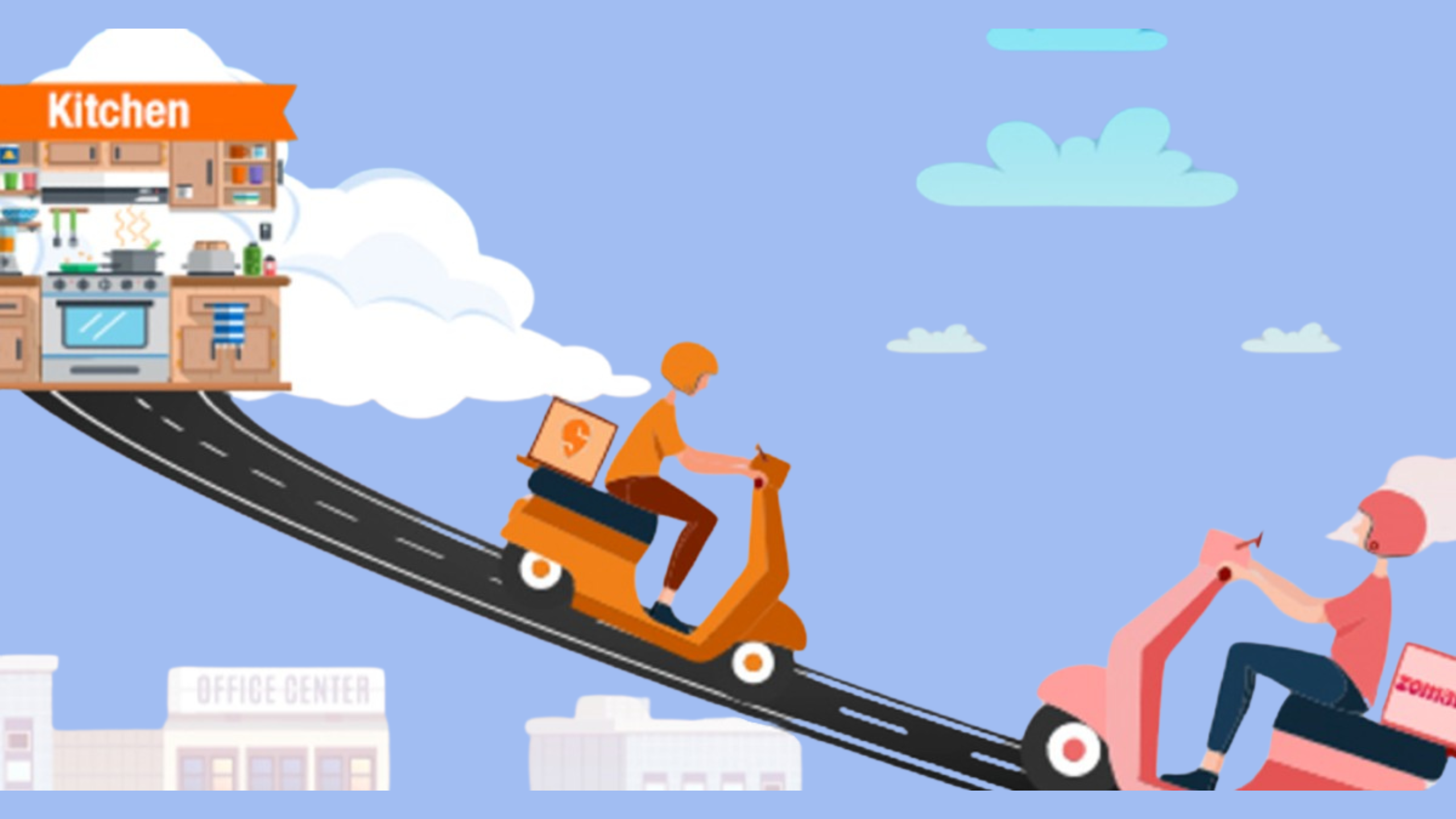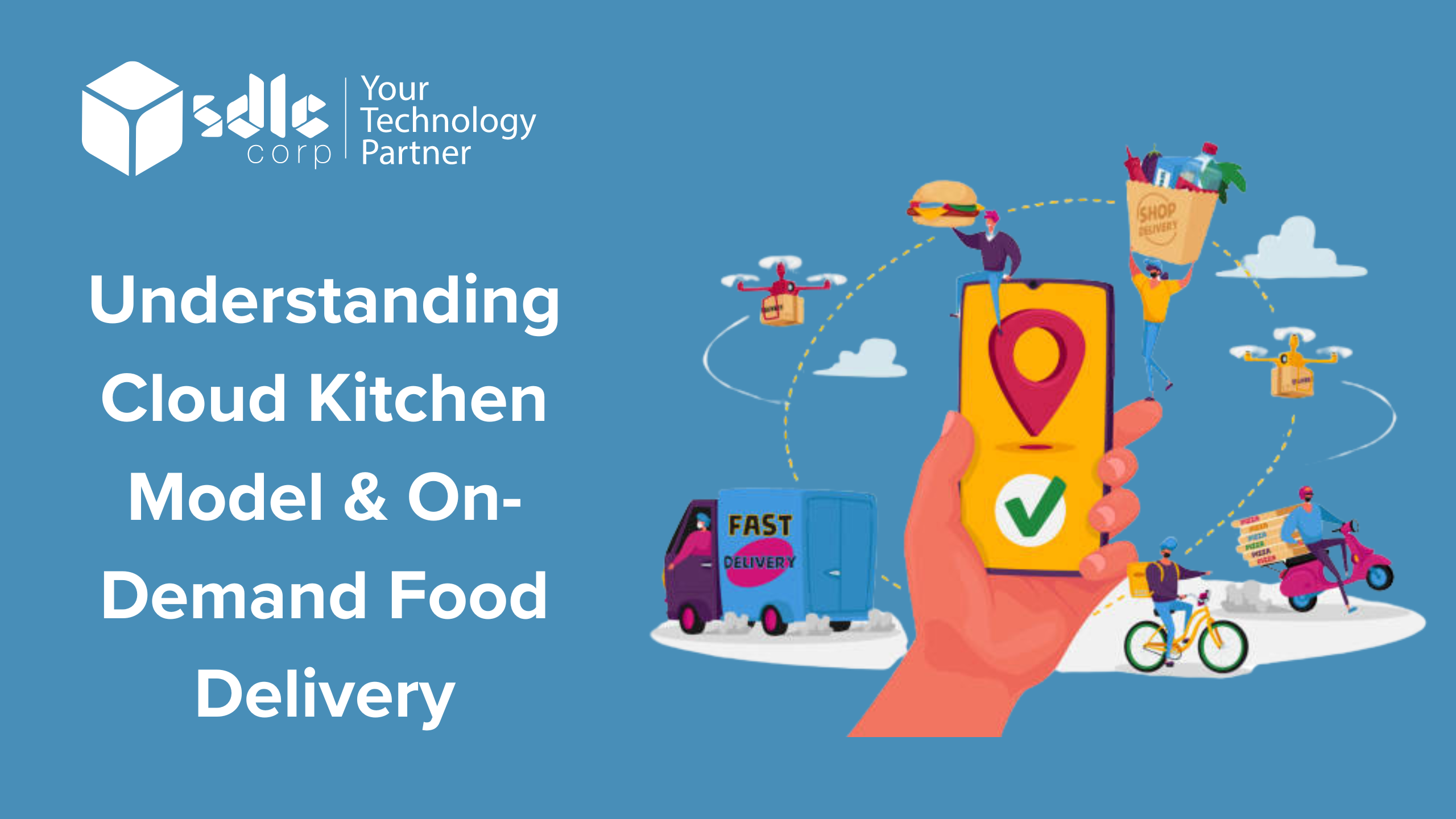Introduction
The surge in popularity of cloud kitchens, also known as ghost kitchens, shared kitchens, or virtual kitchens, underscores a burgeoning trend in the restaurant landscape. These innovative spaces host multiple delivery-only restaurants, capitalizing on consumers’ evolving preferences towards on-demand food delivery over traditional dining experiences. While delivery optimization isn’t novel it has been fundamental to the pizza industry’s success the concept has gained newfound recognition in response to shifting consumer behaviors. Technology plays a pivotal role in driving the efficacy of the cloud kitchen model, further solidifying its position as a transformative force in the food industry.

How Cloud Kitchens Work?
A cloud kitchen is a licensed commercial food production facility where several restaurants can rent space to prepare delivery-specific menu items. There are two primary models:
- Single Restaurant Operating Multiple Virtual Brands: In this model, a single restaurant manages multiple virtual brands with distinct menu offerings.
- Multiple Purveyors Renting and Operating from a Shared Space: Here, various food producers rent sections of a shared kitchen space, akin to a co-working environment, to reduce operational costs.
Cloud kitchens can be further categorized into five distinct models:
- Ghost Kitchen: A ghost kitchen operates solely for delivery and lacks physical dining options. It is a single-brand entity with its kitchen staff and operational infrastructure.
- Shared Cloud Kitchen: Multiple brands rent space within a shared kitchen facility, reducing costs through shared rental fees and operational resources.
- Hybrid Cloud Kitchen: Combining the ghost kitchen concept with physical storefronts, this model offers both delivery and take-out options, requiring higher capital investment but offering enhanced customer relationship management.
- Aggregator Cloud Kitchen: This model involves a delivery service partnering with multiple restaurants to offer diverse cuisines from a shared kitchen space. If the delivery service establishes its kitchen, it transitions into a cloud kitchen, with food preparation handled by the kitchens and customer acquisition managed by the delivery service.
- Full-Outsourced Cloud Kitchen: Operating as an intermediary, this model accepts customer orders and distributes them to kitchens for preparation. Once ready, the service collects and delivers the food, focusing solely on building an efficient on-demand food delivery system.
What Are Benefits Of Cloud Kitchen?
The cloud kitchen model, also known as ghost kitchens, is experiencing a surge in popularity due to its numerous advantages:
- Reduced Overheads: Opening a traditional restaurant entails significant financial challenges. Cloud kitchens alleviate this burden by eliminating expenses associated with building ownership, floor space for customer seating, and other overhead costs.
- Enhanced Efficiency: Ghost kitchens leverage custom-built spaces and optimized food delivery processes to achieve greater operational efficiency. Kitchen stations can be prioritized to expedite order preparation and delivery.
- Real-Time Adaptability: Technology forms the backbone of the cloud kitchen model, enabling real-time adaptability. Orders placed by customers are updated instantly, allowing for real-time tracking of order status. This not only enhances customer satisfaction but also boosts the restaurant’s credibility.

Cloud Kitchen Concept
Cloud kitchens use technology solutions, such as an integrated restaurant ordering system, to serve customers effectively. Here are the critical technology requirements:
- Ordering Platform: The cornerstone of cloud kitchens, the online ordering platform facilitates customer acquisition. It centralizes orders from various sources, including food aggregators, websites, mobile apps, and telephone orders. Essential features include a comprehensive product menu, filtering options, easy signup, multiple payment gateways, seamless checkout, and order tracking.
Kitchen Display System (KDS): Optimizing kitchen operations, updating orders in real-time, providing staff with complete order information and pickup times, and enabling efficient order management and preparation. - Integrated Delivery System: Managing deliveries in-house, the integrated delivery system includes features like order details, address information, route optimization, real-time tracking, delivery confirmation, and payment processing.
Launching a cloud kitchen business is best achieved through developing your on-demand food delivery app. This comprehensive solution provides an advanced ordering platform, intuitive delivery management, and a robust admin dashboard, granting complete control over your cloud kitchen operations.
Gain expert insights into the Cloud Kitchen Model and On-Demand Food Delivery for optimized business strategies.

Conclusion
In conclusion, comprehending the Cloud Kitchen Model and On-Demand Food Delivery unveils a dynamic shift in the food industry landscape. With the rising popularity of ghost kitchens and shared kitchen spaces, businesses are capitalizing on reduced overheads, enhanced efficiency, and real-time adaptability afforded by technology solutions. The integration of advanced ordering platforms, kitchen display systems, and integrated delivery systems underscores the pivotal role of technology in optimizing operations and serving customers effectively. As the demand for convenient dining experiences continues to soar, embracing the cloud kitchen model and developing on-demand food delivery apps offer lucrative opportunities for entrepreneurs to thrive in this evolving market.
FAQs
1. How profitable is Cloud Kitchen?
Cloud kitchens can be profitable due to lower overhead costs and the ability to serve multiple virtual brands from a single location, maximizing revenue potential.
2. What is the cost of starting a cloud kitchen?
The cost to start a cloud kitchen varies based on location, kitchen size, equipment, and permits, but it’s generally lower than opening a traditional restaurant, ranging from $10,000 to $100,000.
3. Is cloud kitchen legal?
Yes, cloud kitchens are legal as long as they comply with local health and safety regulations, zoning laws, and food licensing requirements.
4. Is Cloud Kitchen B2B or B2C?
Cloud kitchens primarily operate on a B2C (Business-to-Consumer) model, serving end consumers through online food delivery platforms.
5. Which is the first cloud kitchen in India?
The first cloud kitchen in India is often credited to brands like Faasos (now Rebel Foods), which pioneered the concept around 2011.















